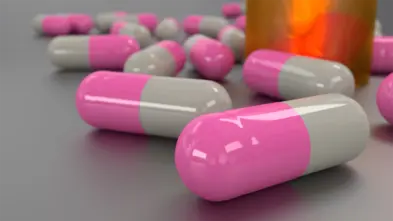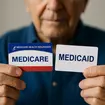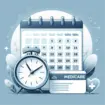Maximize Your Medicare Benefits with Extra Help for Drug Costs

What is Extra Help?
Extra Help is a Medicare program designed to assist individuals with limited income and resources in paying for their Medicare Part D prescription drug plan costs. Also known as the Low-Income Subsidy (LIS), this program helps reduce out-of-pocket expenses for prescription drugs.
Assistance includes premiums, deductibles, and copayments for eligible individuals under Medicare Part D. By meeting specific income and resource requirements, beneficiaries can access significant savings on their prescription medications.

QUESTIONS ABOUT MEDICARE PART D?
Learn about Prescription Drug PlansWhat are the benefits available through Extra Help?
In 2025, Medicare’s Extra Help program continues to support beneficiaries by reducing costs associated with prescription drug coverage. These benefits include full premium coverage, reduced copayments, and elimination of late enrollment penalties, helping individuals manage their medication expenses effectively.
| Coverage Area | What Extra Help Covers in 2025 |
|---|---|
| Prescription Plan Premiums | Pays the full premium up to the benchmark amount for Part D drug plans. |
| Annual Deductibles | Fully covers the Part D deductible, so beneficiaries pay $0 before coverage begins. |
| Copays for Generic Drugs | Reduces out-of-pocket costs to as low as $0–$1.55 per prescription. |
| Copays for Brand-Name Drugs | Lowers out-of-pocket costs to as low as $0–$4.15 per prescription. |
| Coverage Gap (Donut Hole) | The coverage gap is fully eliminated under the Inflation Reduction Act. |
| Catastrophic Drug Costs | Provides minimal or no out-of-pocket costs after reaching catastrophic spending levels. |
| Late Enrollment Penalties | Waives Part D late enrollment penalties, ensuring no additional costs for delayed sign-up. |
How to get Extra Help from Medicare?
You automatically qualify and are enrolled in Extra Help if:
- You have full Medicaid coverage
- Get help from the state to pay Medicare Part B premiums
- Get Supplemental Security Income (SSI) from Social Security
Are you Dual Eligible?
If you currently have Medicare and already enrolled in Medicaid, Supplemental Security Income (SSI), or a Medicare Savings Program (MSP), you may be automatically eligible for Extra Help and enrolled in a Prescription Drug Plan (Medicare Part D).

WANT TO LEARN MORE ABOUT DUAL ELIGIBILITY?
Understand your benefits as a dual eligibleIf you think you automatically qualify but aren’t receiving the benefit currently, please contact the Social Security Administration (SSA).
By Phone:
(800) 772-1213 (TTY 800-325-0778) , Monday – Friday between 8 a.m. and 7 p.m., your local time.
In Person:
If you want to visit your local Social Security field office, click thisSSA field locator webpage link. Enter your zip code to locate the nearest office.
If you’re not automatically eligible for Extra Help, review the eligibility requirements and other available options below
What are the Eligibility Requirements for Extra Help?
In 2025, you are eligible for Extra Help if your 2024 yearly income and resources are below these limits:
| Eligibility Category | Income Limit (Annual) |
Resource Limits (Individual) |
|---|---|---|
| Individual (Single) | $22,590 | $17,220 |
| Couple (Married) | $30,660 | $34,360 |
|
* Income limits are higher for residents of Alaska and Hawaii. ** Resource limits exclude your home, car, up to $1,500 for burial expenses (per person), and certain other assets. |
||
Starting January 1, 2025, Extra Help will expand eligibility for more beneficiaries due to policy updates from the Inflation Reduction Act. Individuals with incomes up to 150% of the Federal Poverty Level (FPL) and limited resources will qualify for full benefits, compared to previous thresholds.
How to enroll for Extra Help?
To check eligibility and enroll, here are suggested steps:
1. Understand Eligibility Criteria
To qualify for Extra Help in 2025, you must meet income and resource requirements:
- Income Limit: Up to 150% of the Federal Poverty Level (FPL) based on household size.
- Resource Limit: Includes savings, investments, and real estate (other than your primary residence). For 2025, limits were $17,600 for individuals and $35,130 for married couples.
2. Check Eligibility
You can check your eligibility by:
- Using the Social Security Administration (SSA) Screening Tool: Visit thisSocial Security Administration Webpage to answer a short questionnaire.
- Contacting Medicare: Call 1-800-MEDICARE (1-800-633-4227) for assistance.
- Visiting Your Local State Medicaid Office: They can help determine if you qualify and provide information about related programs. To find contact information of your local Medicaid office, go to thisMedicaid.gov Webpage.
- Talking to a SHIP Counselor: The State Health Insurance Assistance Program (SHIP) offers free, personalized help. Locate a SHIP counselor at theSHIP website and click on the “SHIP Locator” button.
3. Gather Required Information
When applying, have the following details ready:
- Proof of Income: Recent pay stubs, Social Security benefits statements, or other income sources.
- Proof of Resources: Bank statements, investment account details, and information on real estate or vehicles.
- Social Security Number and Medicare Card: For identification and verification purposes.
4. Apply for Extra Help
You can apply through one of the following methods:
- Online Application (Recommended): Visit theSSA’s Extra Help website. Complete and submit the application electronically.
- Paper Application: Download a copy of the application from theSSA website or request one by calling 1-800-772-1213 (TTY 1-800-325-0778) and mail the completed application to the SSA.
- In-Person or Phone Assistance: Visit your local SSA office for hands-on support, or call the SSA directly to apply over the phone.

LOOKING FOR MEDICARE KEY DATES?
View Enrollment DeadlinesEnjoying this article?
Follow us for more tips and insights!
What are the Options if You Don’t Qualify for Extra Help?
If you do not qualify for Extra Help, there are several alternatives and resources available to help reduce your prescription drug costs.
1. State Pharmaceutical Assistance Programs (SPAPs)
Many states offer State Pharmaceutical Assistance Programs (SPAPs) that provide financial assistance for prescription drug costs to residents who meet specific income and eligibility requirements. SPAP benefits vary by state but often coordinate with Medicare Part D plans.
Check to see if your state has a Pharmaceutical Assistance Program at thisMedicare.gov webpage
2. Medicare Savings Programs (MSPs)
Medicare Savings Programs help cover Medicare Part A and Part B premiums, deductibles, and copayments. While primarily for medical costs, reducing these expenses can free up funds for prescriptions.
There are 4 Medicare Savings Programs:
Qualified Medicare Beneficiary (QMB):
Helps cover premiums, deductibles, and copayments for Medicare Part A and/or Part B.Specified Low-Income Medicare Beneficiary (SLMB):
Pays Medicare Part B premiums.Qualifying Individual (QI):
Assists with Part B premiums, with funding on a first-come, first-served basis.Qualified Disabled and Working Individuals (QDWI):
Covers the cost of Medicare Part A premiums for disabled individuals who lost Social Security disability benefits and premium-free Part A because of returning to work.
To qualify for a Medicare Savings Program, income and resources must be below a certain limit that vary by state.
Even if you don’t think you qualify, Medicare encourages you to apply.
Contact your local State Medicaid office to get started. If you need to find contact information for your local Medicaid office, go to thisMedicaid.gov Webpage
3. Prescription Drug Manufacturer Assistance Programs
Many pharmaceutical companies offer Patient Assistance Programs (PAPs) for individuals who cannot afford their medications. Eligibility criteria vary but are often based on income, insurance status, and the specific medication.
If you are looking for assistance paying for a specific drug, click on thisMedicare.gov webpage link to search by drug name.
4. Discount Programs and Cards
Prescription Discount Cards: These cards provide significant discounts on prescriptions at participating pharmacies. They do not require insurance and are free to use.
Need help with Prescription Discount Card options?
5. Federally Qualified Health Centers (FQHCs)
Federally Qualified Health Centers (FQHCs) are community-based healthcare providers that receive federal funding to deliver comprehensive primary care services to underserved populations. FQHCs often provide prescription drugs at reduced costs through their in-house pharmacies or by participating in the 340B Drug Pricing Program.
To locate a Federally Qualified Health Center (FQHC) near you, click on thisHealth Resources and Services Administration (HRSA) Find a Health Center tool link, enter your city, state, or ZIP code into the search bar to find FQHCs in your area, along with contact information and directions.
6. Non-Profit Organizations and Private Partnerships
Rx Outreach
A nonprofit, Rx Outreach is a mail-order pharmacy providing affordable medications to individuals and families with income at or below 400% of the Federal Poverty Level (FPL). It offers a wide range of generic medications for chronic and acute conditions at significantly reduced costs with free shipping directly to patients' homes.
To learn more, visit their website atRx Outreach.org
Partnership for Prescription Assistance (PPA)
The Partnership for Prescription Assistance is a program designed to help individuals who lack prescription drug coverage access free or low-cost medications. Sponsored by pharmaceutical companies, healthcare providers, and advocacy organizations, PPA connects eligible patients with Patient Assistance Programs (PAPs) offered by drug manufacturers.
To learn more or access assistance, visit their website athelpingpatients.org/
7. Shop for a Lower-Cost Prescription Drug Plan (Medicare Part D)
If you don’t qualify for Extra Help, review your Medicare Part D coverage annually during the Medicare Open Enrollment Period (October 15 to December 7).
If you are dual-eligible (who qualifies for both Medicare and Medicaid), you may be eligible for a Special Enrollment Period (SEP) allowing you to make changes to your Prescription Drug Plan (Part D).
At Hesteon, we simplify finding the right Medicare Part D plan tailored to your needs.
Whether it’s during Open Enrollment or checking if you qualify for a Special Enrollment Period, we’re here to help explore your Part D options.

Looking for local support and help?
Discover Local Assistance OptionsCall us today to get personalized guidance and discover cost-saving opportunities.
We are here to help.
Speak with a licensed insurance agent
OR
Other options
Follow us for the latest updates!
Receive Medicare news, current senior health trends, and helpful tips delivered to your newsfeed.


